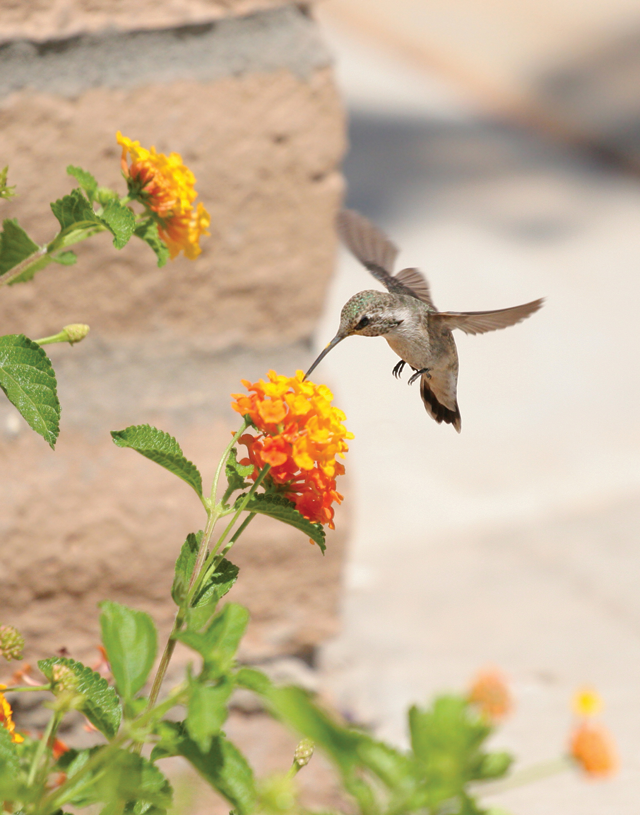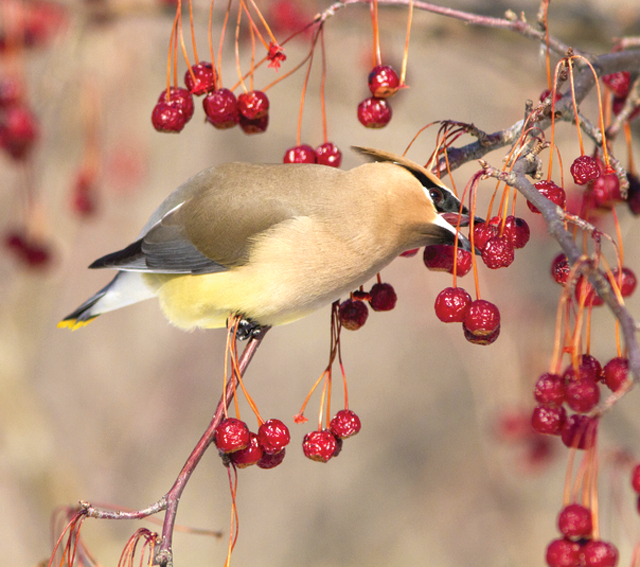Birdscaping
Landscaping for Birds
Although the food we provide in feeders to backyard birds is much appreciated by our feathered visitors, it is only a fraction of the food consumed in wild birds’ diets.
Wild birds feast on natural sources of seeds and nectar and dine on all manner of insects. The latter are especially preferred by nesting birds because they provide protein-dense nutrients for nestlings. If you’d like to invite birds to visit and stay a little longer, consider birdscaping your yard with a focus on creating a diverse menu.
Flowering Plants
Make sure to include flowering plants in your bird-friendly habitat. Flower blossoms are pollen producers that attract beneficial bees and butterflies. Seeds produced by flowers, such as salvia and purple coneflower, attract chickadees, goldfinches and other birds. The nectar of flowers attracts all kinds of beneficial bugs, including butterflies, hoverflies and beetles.
Native Plants and Annuals
Give preference to native plants when designing your bird and insect-friendly landscape. These beauties are well adapted to local soils and climate, attract beneficial insect and bird species and require less fertilizer and maintenance than annuals. When selecting annuals, avoid double-blossomed hybrids. The overlapping petals on these varieties make it difficult for butterflies and hummingbirds to access the nectar. For an excellent resource to selecting native plants, download the free St. Paul Audubon Society’s Go Native to Sustain Songbirds and Other Wildlife in Your Garden booklet (pdf) and see our list in the table below.


Berry-Producing Plants
It’s wise to plant a few varieties of berry-producing plants for your birds’ backyard buffet. In their flowering stage, these plants attract bees and butterflies. Later in the season, berries provide a much-needed source of sugar for migratory birds and lure feeder-shy birds such as American Robins and Gray Catbirds to your yard. As it gets colder, trees that hold dried berries provide an extended food source for foraging birds. You may be delighted to receive a flock of Cedar Waxwings in the winter to dine on chokecherries, crab apples or other crops that persist on fruit trees throughout the season.
Trees
Birds benefit from many attributes of trees, including shelter, nesting sites, escape cover and a source of food. Depending on the variety, trees can provide sap, buds, seeds, nuts and fruits that benefit birds and insects. Tree bark provides a habitat for larvae and spider eggs, appreciated by birds such as Brown Creepers, chickadees, nuthatches and woodpeckers. When selecting trees for your yard, consider varieties that provide food sources for birds and insects throughout the seasons.
PLANTING FOR BIRDS AND INSECTS |
||
Common Name |
Attributes |
Attracts |
Annuals |
||
| impatiens | blooms from summer to first frost; seeds, nectar | bees and other pollinating insects, butterflies, nectar-eating birds (e.g., hummingbirds), birds that eat from seed heads (e.g., chickadees, goldfinches) and birds that eat fallen seeds (e.g., cardinals, native sparrows, House Wrens, robins) |
| marigolds | pollen, seeds | |
| nasturtiums | low-growing; nectar, seeds | |
| sunflowers | pollen, nectar, seeds | |
| zinnias | pollen, nectar, seeds | |
Native Perennials |
||
| asters | blooms in autumn; nectar, seeds | bees and other pollinating insects, butterflies, nectar-eating birds (e.g., hummingbirds), birds that eat from seed heads (e.g., chickadees, goldfinches) and birds that eat fallen seeds (e.g., cardinals, native sparrows, House Wrens, robins) |
| bee balm | nectar, seeds | |
| butterfly weed | blooms early spring; nectar | larval insects, bees, butterflies, hummingbirds |
| cardinal flowers | nectar | hummingbirds, special favorite of cardinals |
| common milkweed | nectar | caterpillar larvae, butterflies (monarchs) |
| joe-pye weed | pollen, nectar, seeds | bees and other pollinating insects, butterflies |
| penstemon | pollen, nectar, seeds | bumblebee and other pollinating insects, hummingbirds |
| purple coneflowers | pollen, nectar, seeds | butterflies, birds that eat from seed heads (e.g., chickadees, goldfinches) |
| rudbeckia | pollen, seeds | bees and other pollinating insects, butterflies |
Shrubs/Bushes |
||
| American highbush cranberry | shade tolerant; berries persist through winter | berry-eating birds (e.g., American Robin, Cedar Waxwing) |
| northern bayberry | semi-evergreen; waxy berries persist through winter | |
| redosier dogwood | flowers in spring, fruits August–November | |
| serviceberry | flowers April–June, fruits in summer | |
| wild rose | flowers, red hips contain vitamin C | source of winter food for birds |
Trees |
||
| black cherry | native; fruit, cover | attracts 429 species of larval insects, attracts birds that eat larval insects (e.g. orioles, Scarlet Tanagers, warblers, woodpeckers), fruit-eating birds like Rose-breasted Grosbeaks and Baltimore Orioles, year-round birds like cardinals and chickadees; wilted leaves and twigs are poisonous to livestock |
| bur oak, white oak | native; acorns, nesting sites | attracts 518 species of larval insects, attracts birds that eat larval insects, acorns attract Blue Jays, turkeys, grouse, Wood Ducks |
| crab apple | nectar, fruit | attracts birds that eat fruit, berries and nectar |
| hackberry | native; berries | attracts 41 larval insects, attracts birds that eat larval insects |
| mountain ash | some varieties native; berries, cover | berry-eating birds, a favorite of Cedar Waxwings, Yellow-bellied Sapsuckers and Ruffed Grouse |
| northern white cedar | dense cover, nesting sites | a favorite nesting site for Northern Cardinals |
| spruces | year-round cover, nesting sites, cones produce seeds | attracts birds that eat seeds from cones: Blue Jays, chickadees, nuthatches, crossbills; another favorite nesting site for Northern Cardinals |
| white pine | insect habitat, year-round cover, cones produce seeds | attracts 191 larval insects, attracts birds that eat larval insects, Pine Grosbeaks |

